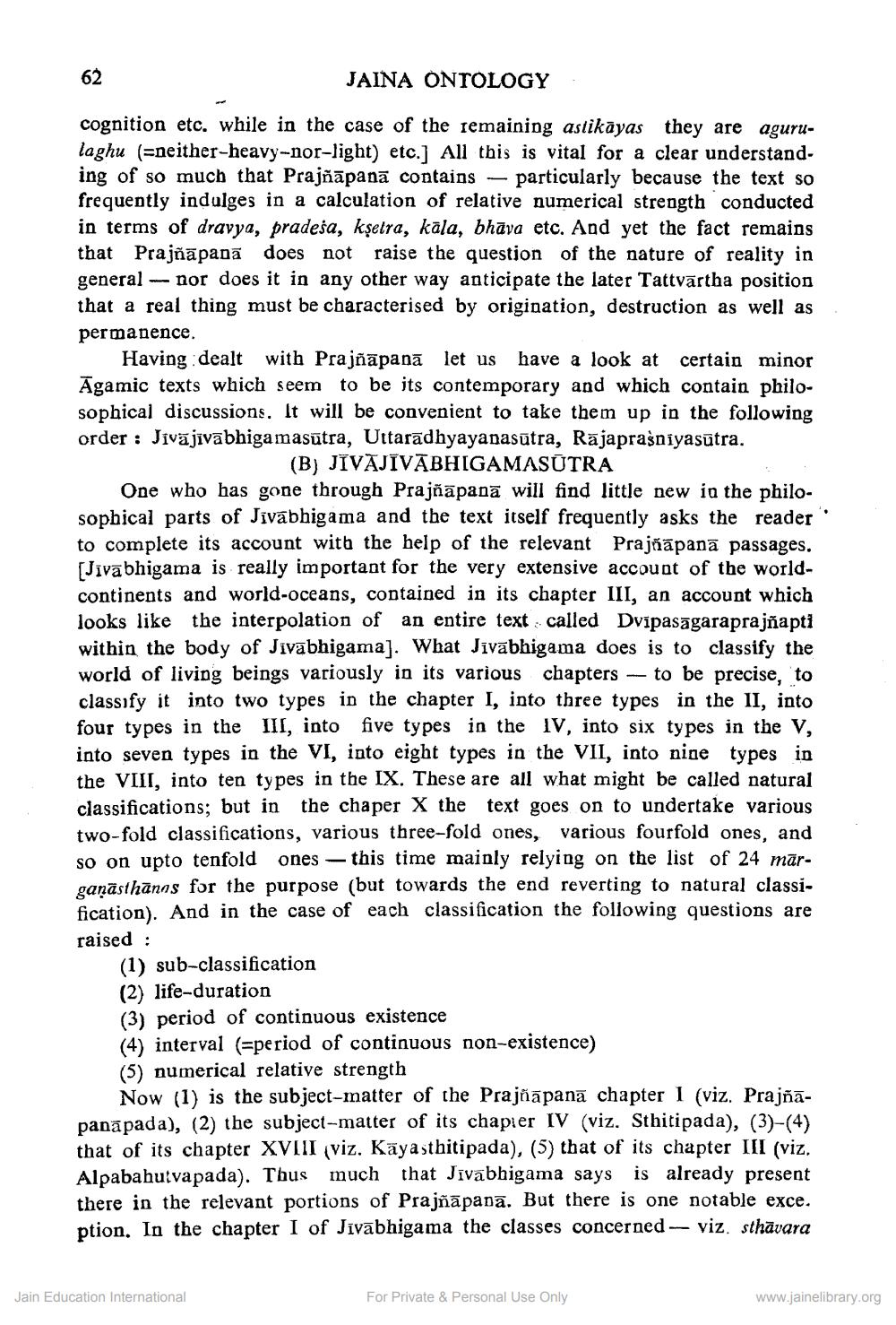________________
JAINA ONTOLOGY
cognition etc. while in the case of the remaining astikāyas they are agurulaghu (=neither-heavy--nor-light) etc.) All this is vital for a clear understand. ing of so much that Prajñāpanā contains — particularly because the text so frequently indulges in a calculation of relative numerical strength conducted in terms of dravya, pradeša, kşetra, kāla, bhāva etc. And yet the fact remains that Prajñāpanā does not raise the question of the nature of reality in general - nor does it in any other way anticipate the later Tattvārtha position that a real thing must be characterised by origination, destruction as well as permanence.
Having dealt with Prajñāpanā let us have a look at certain minor Āgamic texts which seem to be its contemporary and which contain philosophical discussions. It will be convenient to take them up in the following order : Jivājivabhigamasutra, Uttarādhyayanasūtra, Rājaprašniyasūtra.
(B) JĪVĀJIVĀBHIGAMASŪTRA One who has gone through Prajñāpanā will find little new in the philosophical parts of Jivabhigama and the text itself frequently asks the reader to complete its account with the help of the relevant Prajăāpanā passages. [Jivabhigama is really important for the very extensive account of the worldcontinents and world-oceans, contained in its chapter III, an account which looks like the interpolation of an entire text called Dvipasāgaraprajñapti within the body of Jivabhigama). What Jivābhigama does is to classify the world of living beings variously in its various chapters -- to be precise, to classify it into two types in the chapter I, into three types in the II, into four types in the III, into five types in the IV, into six types in the V, into seven types in the VI, into eight types in the VII, into nine types in the VIII. into ten types in the IX. These are all what might be called natural classifications; but in the chaper X the text goes on to undertake various two-fold classifications, various three-fold ones, various fourfold ones, and so on upto tenfold ones — this time mainly relying on the list of 24 mārganästhānas for the purpose (but towards the end reverting to natural classification). And in the case of each classification the following questions are raised :
(1) sub-classification (2) life-duration
3) period of continuous existence (4) interval (=period of continuous non-existence) (5) numerical relative strength
Now (1) is the subject matter of the Prajñāpanā chapter 1 (viz. Prajñāpanā pada), (2) the subject-matter of its chapier IV (viz. Sthitipada), (3)-(4) that of its chapter XVIII (viz. Kayasthitipada), (5) that of its chapter III (viz. Alpabahutvapada). Thus much that Jivabhigama says is already present there in the relevant portions of Prajñāpanā. But there is one notable exce. ption. In the chapter I of Jivabhigama the classes concerned -- viz. sthāvara
Jain Education International
For Private & Personal Use Only
www.jainelibrary.org




